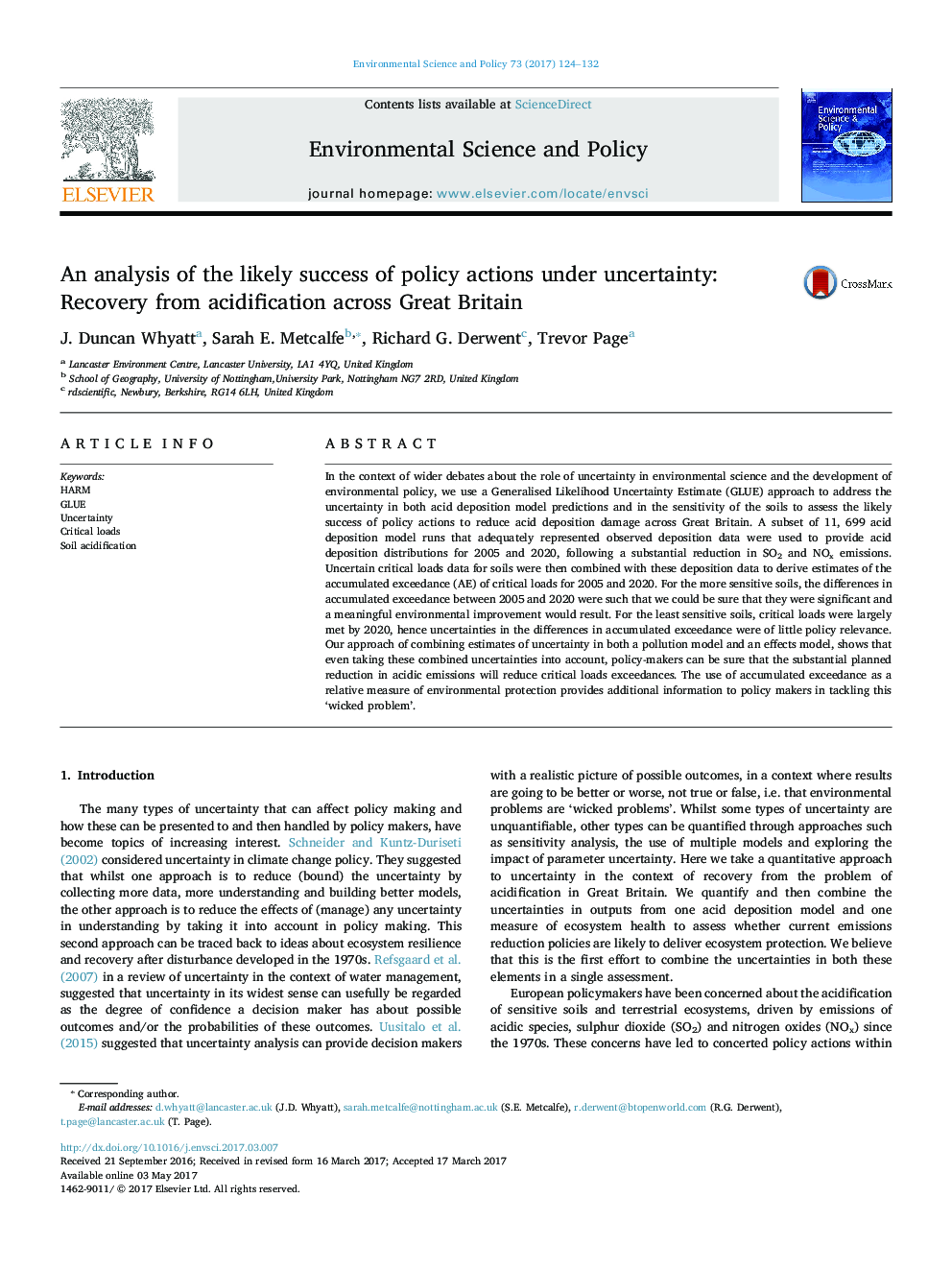| Article ID | Journal | Published Year | Pages | File Type |
|---|---|---|---|---|
| 5115858 | Environmental Science & Policy | 2017 | 9 Pages |
Abstract
In the context of wider debates about the role of uncertainty in environmental science and the development of environmental policy, we use a Generalised Likelihood Uncertainty Estimate (GLUE) approach to address the uncertainty in both acid deposition model predictions and in the sensitivity of the soils to assess the likely success of policy actions to reduce acid deposition damage across Great Britain. A subset of 11, 699 acid deposition model runs that adequately represented observed deposition data were used to provide acid deposition distributions for 2005 and 2020, following a substantial reduction in SO2 and NOx emissions. Uncertain critical loads data for soils were then combined with these deposition data to derive estimates of the accumulated exceedance (AE) of critical loads for 2005 and 2020. For the more sensitive soils, the differences in accumulated exceedance between 2005 and 2020 were such that we could be sure that they were significant and a meaningful environmental improvement would result. For the least sensitive soils, critical loads were largely met by 2020, hence uncertainties in the differences in accumulated exceedance were of little policy relevance. Our approach of combining estimates of uncertainty in both a pollution model and an effects model, shows that even taking these combined uncertainties into account, policy-makers can be sure that the substantial planned reduction in acidic emissions will reduce critical loads exceedances. The use of accumulated exceedance as a relative measure of environmental protection provides additional information to policy makers in tackling this 'wicked problem'.
Related Topics
Physical Sciences and Engineering
Energy
Renewable Energy, Sustainability and the Environment
Authors
J. Duncan Whyatt, Sarah E. Metcalfe, Richard G. Derwent, Trevor Page,
